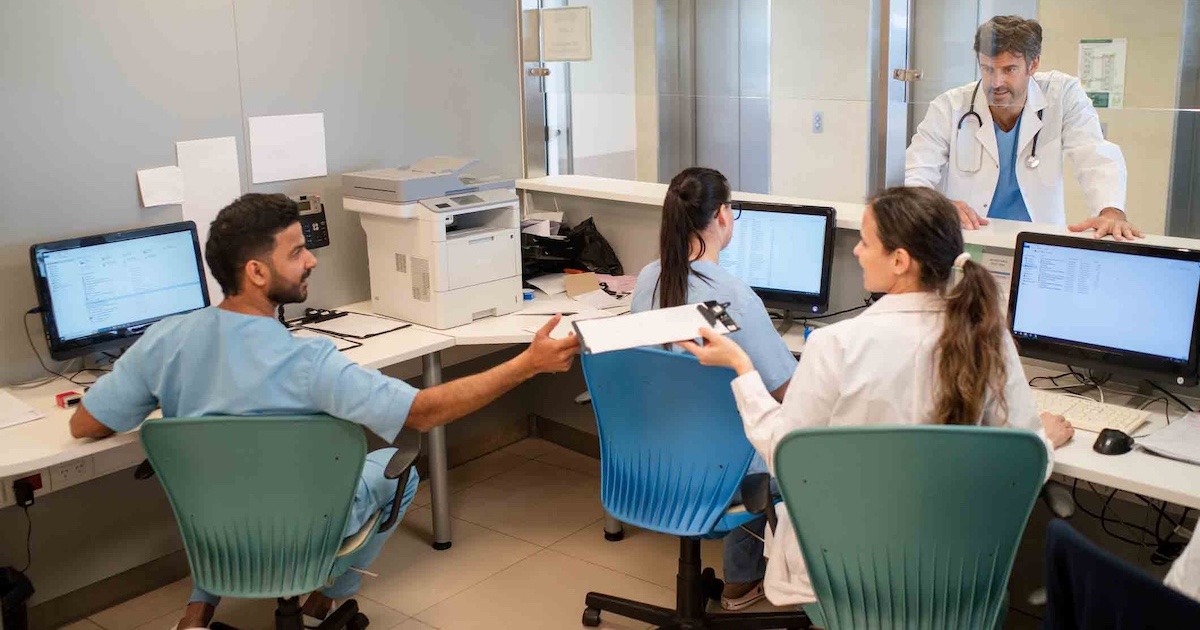Parents of newborns in a Provo, Utah-based neonatal intensive care unit can now sleep side-by-side with their baby via a computer or mobile device, thanks to hospital officials who set out to transform department communication.
Each of the 65 NICU beds at Utah Valley Regional Medical Center, part of the Intermountain Healthcare network, will be equipped with three cameras, two fixed and one rotating, which will allow parents access to real-time, live video of their baby 24 hours a day.
This is big news for parents living in what one physician bills the 'fertility capital of the United States,' where the birth rate stands at 85 births per 1,000 women, well above the U.S. average of 54 per 1,000.
Spearheading the NICU redesign is Stephen Minton, MD, a neonatologist at Intermountain Healthcare, who says putting the parents at the forefront of the idea process proves paramount. “When you get down to the nitty-gritty, the number one thing that people really want to do is recover being a parent of babies in the NICU (and) be participants in the kinds of care that take place,” he said.
Using cutting-edge technology and medical equipment is valuable, but one can't neglect the values of the human interaction dynamic, says Minton, who says too often technology has severed that human connection. When a newborn is transferred to the NICU, the last thing a parent wants is to feel disconnected in any way from their baby, he says. So he set out to use telehealth in a way that incorporates parents as an integral piece in the care process.
Minton says the telehealth technology also facilitates improved physician-parent communication. Throughout the day, Minton visits some 65 babies in the NICU, and oftentimes he may not get to a specific baby for a long period of time, so parents either sit around waiting or he'll call them. Now, with a 24-hour video feed, Minton – using his own camera – can verbalize a description of the baby on camera, which the parents can then access at any time.
“When we communicate, we communicate not only with sound but with vision and people’s responses,” he adds.
Minton says making communication a chief concern at Utah Valley Regional Medical Center has done wonders for the care process with parents, and also with relationships fostered between physician and parent. Since 1979, when he started the NICU unit, Minton has helped care for some 26,000 babies, all the while never being faced with a single lawsuit. It’s “really unusual in critical care medicine to go quite that long,” he says. “And the reason isn’t that I haven’t made mistakes. The reason is because I communicate with parents, and so they understand what you’re really trying to do. That’s really all what people want. They want to be involved, and they want to feel like they have a voice and that you care."
The NICU rebuild is currently under way at the medical center and is slated to go live within two months.
Utah Valley Regional Medical Center joins a growing number of hospital NICUs nationwide installing bedside cameras. Some of the more recent hospitals to deploy the technology include Ochsner Medical Center in New Orleans, back in the summer of 2012, and Texas Health Presbyterian Hospital Dallas in January 2013. Bon Secours Richmond (Va.) Health System was among the first in the nation to install cameras in the NICU, back in 2005.


